Earth Day Hike / Caminata dia de la Tierra
Blog and photos by Maribel Sierra, Latino Outdoors Ambassador – SF Bay Area
 Latino Outdoors group at China Camp State Park.
Latino Outdoors group at China Camp State Park.
This year marks the 45-year anniversary of Earth Day, which was first celebrated in 1970 during the start of the environmental movement. Since then, awareness of environmental issues has spread all over the world with over 5,000 groups in 184 countries. On April 19th, in appreciation and celebration of Earth Day, our Latino Outdoors volunteer staff and participants in the Bay Area, including myself and Alicia Cruz, met up with the Marin County Parks and California State Parks staff for morning hike at China Camp State Park. This naturalist led expedition was a great opportunity to learn about the unique salt marsh ecosystem and natural history. To me, this was yet another chance to build a connection to the earth.
Located on the shore of the San Pablo Bay, China Camp State Park is named for a historic Chinese-American settlement and is surrounded by stunning views of the bay. One thing our group noticed right away at the trailhead was the prevalence of purple flowers on the fields. Those purple flowers turned out to be wooly vetch, a member of the pea family and a nitrogen fixer, a plant that turns an otherwise unusable form of nitrogen into a form that plants can easily use to grow. A member of group, Rosio, also noted the wild oats, or avena, in the field which reminded her of the fields and hills of Peru.
 Wooly vetch (Vicia villosa) is a nitrogen fixer and very widespread in this field.
Wooly vetch (Vicia villosa) is a nitrogen fixer and very widespread in this field.
 A close up of Wooly vetch (Vicia villosa).
A close up of Wooly vetch (Vicia villosa).
We continued trekking along the path to reach the salt marsh marked by channels of water and plants. Our guide from Marin County Parks, David, explained that salt marshes are where fresh and salt water mix. The changing tides bring in nutrients needed for plant growth and ultimately feed fish and other organisms. Amazingly, all of this activity makes the salt marsh one of the most productive ecosystems on earth!
 Salt marshes bring in an abundance of nutrients needed for plant growth.
Salt marshes bring in an abundance of nutrients needed for plant growth.
Some of the species that we encountered on the hike included:
- Coastal live oak, the most common tree in Marin County
- Manzanita (Spanish for little apple) tree
- Madron tree
- Western fence lizard
- Ground iris
- Oyster mushroom
- Deer
- White larkspur
More photos on Latino Outdoors Facebook page albums>> “Earth Day Hike”
Despite the productivity of this ecosystem, rising sea levels and other impacts from climate change, are becoming a concern to park rangers, researchers, as well as the general public. As a result of California’s drought, some species have declined while drought tolerant plants and other invasive species have flourished. Researchers continue to spend time in regions like China Camp State Park to monitor species, changing sea levels, and salinity. As park visitors we have a responsibility to respect and help advocate for the conservation of these natural areas not only on Earth Day but everyday.
 Marin County, California State Park staff, and Latino Outdoors volunteer staff.
Marin County, California State Park staff, and Latino Outdoors volunteer staff.
